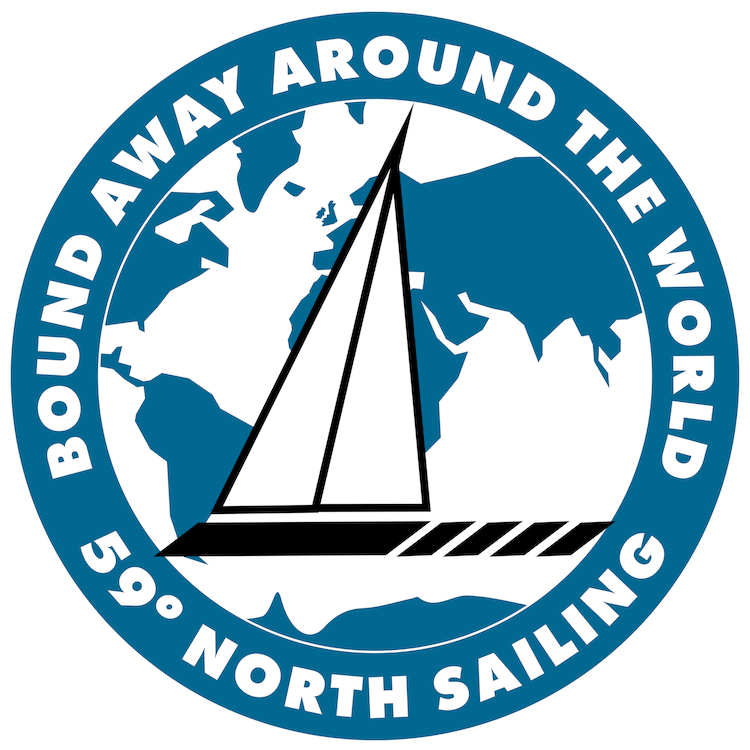Pos: Mission Control Container, Sweden
Time: 12:11 CET
Ahoy shipmates! Andy here, at the helm for the first Logbook entry. So what’s up at Mission Control? I’m deep into the back-end work at 59º North, knocking out Quarterdeck content with Nikki, recording podcasts for the current On the Wind season (we’re coming up on episode 400!), sorting out boring finance and tax-related stuff, and planning FALKEN’s 2025 calendar.
One of the most exciting, and yet increasingly challenging aspects of what 59º North does is the passage planning — coordinating the schedules of both boats and all our sailing staff, and making that fit with all of our personal lives ashore.
2025’s schedule is going to require a big decision by us: do we finally go into the Pacific or not?! I’ve had a Pacific passage plan charted out since at least 2017, and it excites me looking into a new ocean.
So how do we actually do the passage planning? Here’s a look at our process:
Consult Jimmy Cornell’s World Cruising Routes to determine the correct season in which to sail to avoid hurricanes and bad weather.
Use Google Earth’s ‘ruler’ tool to measure rhumb-line distances between different ports.
Plug the rhumb-line distances into an Airtable spreadsheet:
A formula calculates days at sea for each boat, based on a conservative estimate of historic average speeds at sea.
A second formula then takes the estimated days at sea and adds 4 to it to give a buffer for delays, and also the 1-2 days before and after each passage to do prep & cleanup with the crew.
Another spreadsheet formula then calculates the crew fee based on a price-per-day number that we set before each season.
Then, we manually go in and adjust not only the crew fee, but also, and most importantly, the days needed for each passage. For example, if we know a passage will be upwind, we’ll add several days to account for the extra miles spent tacking. Or if we have a particularly challenging weather situation, like on the leg from Svalbard-Iceland, we’ll add in buffer days to account for weather delays.
Finally, we make sure that we have a minimum of 5 days downtime for rest & repairs between each passage, and every four passages we’ll insert a 10-14 day maintenance period, where our Bosun Adam Browne will fly out to perform routine maintenance. These periods also act as a buffer — in case any of the previous 4 trips get delayed, this gives us time to catch up, so as not to affect the rest of the sailing season.
Mark my words, we will be heading into the Pacific at some point. Will it be 2025? The new calendar will publish sometime in the fall of 2023, and honestly, as of today, we don’t know. But when we know, you’ll know.
Thanks for reading this first Logbook entry! I hope you enjoyed it and learned something new about 59º North. Read on for upcoming passage availability, what’s new on the podcast and upcoming events!
— Andy


